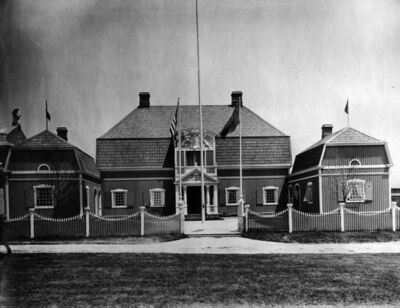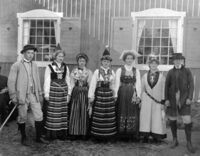Sweden
 | |
| Location | Place of Nations |
|---|---|
| No. of Buildings | 1 |
| Construction | |
| Construction Cost | $17,018 ($513,250 in 2021) |
| Dates | |
| Dedication Day | May 9th, 1904 |
| Architecture | |
| Architect | Ferdinand Boberg |
Sweden's pavilion on the Place of Nations was a typical Swedish country home and carriage house of the sixteenth century. It was brought to the World's Fair in sections and reconstructed to represent King Oscar's Government at the Exposition.
Description[edit | edit source]

The Pavilion was surrounded by a characteristic Swedish garden. All of the material used in the building, as well as the furnishings came from the forests of Sweden.
Inside, visitors could see a bust of the King of Sweden. The walls were decorated with souvenirs of Swedish history and romance. There were samples of potteries from the Gustafsberg pottery, a library of Swedish authors, and pictures of native landscapes. The offices of the Royal Swedish Commission were in one of the wing's of the building.
After the Fair[edit | edit source]
After the Fair closed, the building was moved to Lindsborg, Kansas by the U.S. Minister to Sweden, W. W. Thomas Jr. in 1904, where it became the Bethany College Art Department. Later, it was relocated to the McPherson County Old Mill Museum by the Smoky Valley Historical Association.
